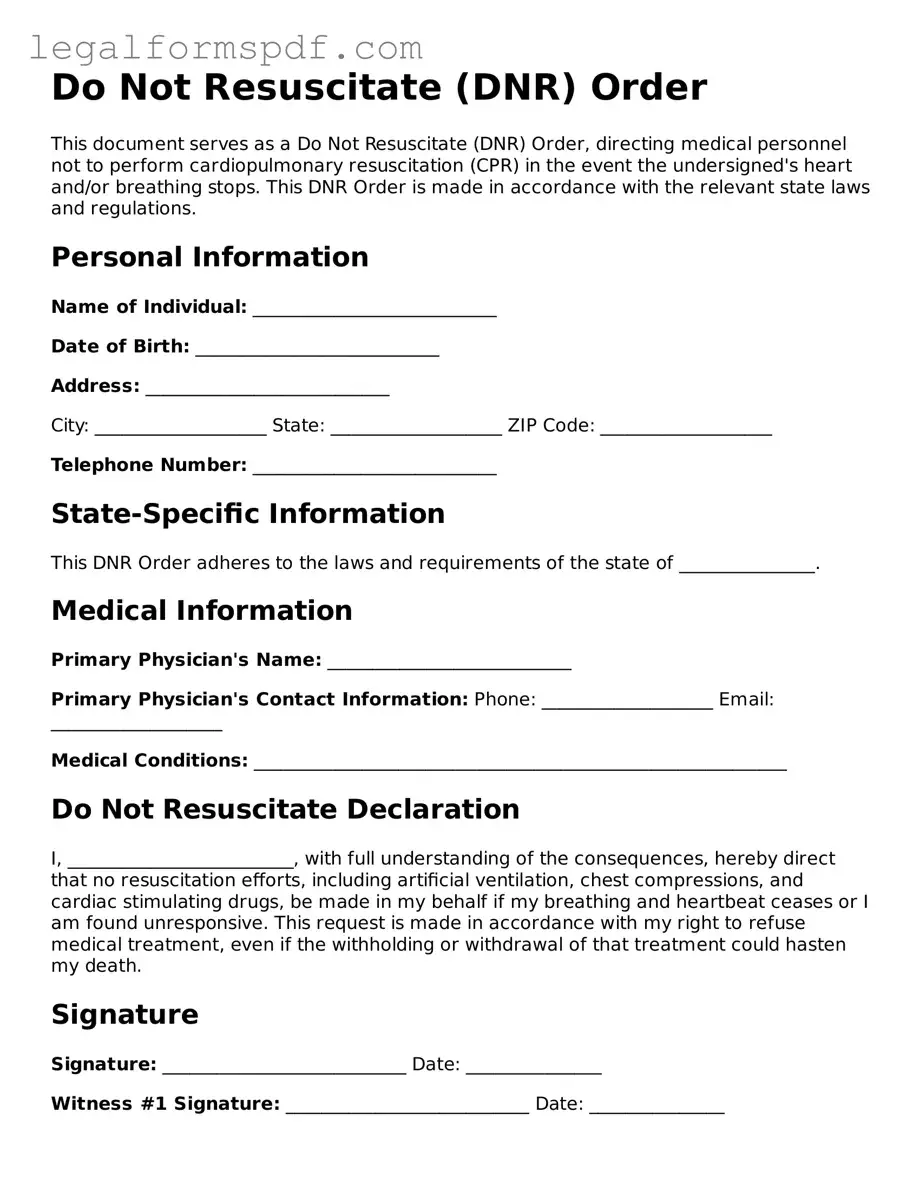Do Not Resuscitate (DNR) Order
This document serves as a Do Not Resuscitate (DNR) Order, directing medical personnel not to perform cardiopulmonary resuscitation (CPR) in the event the undersigned's heart and/or breathing stops. This DNR Order is made in accordance with the relevant state laws and regulations.
Personal Information
Name of Individual: ___________________________
Date of Birth: ___________________________
Address: ___________________________
City: ___________________ State: ___________________ ZIP Code: ___________________
Telephone Number: ___________________________
State-Specific Information
This DNR Order adheres to the laws and requirements of the state of _______________.
Medical Information
Primary Physician's Name: ___________________________
Primary Physician's Contact Information: Phone: ___________________ Email: ___________________
Medical Conditions: ___________________________________________________________
Do Not Resuscitate Declaration
I, _________________________, with full understanding of the consequences, hereby direct that no resuscitation efforts, including artificial ventilation, chest compressions, and cardiac stimulating drugs, be made in my behalf if my breathing and heartbeat ceases or I am found unresponsive. This request is made in accordance with my right to refuse medical treatment, even if the withholding or withdrawal of that treatment could hasten my death.
Signature
Signature: ___________________________ Date: _______________
Witness #1 Signature: ___________________________ Date: _______________
Witness #1 Printed Name: ___________________________
Witness #2 Signature: ___________________________ Date: _______________
Witness #2 Printed Name: ___________________________
Physician's Statement
I, _________________________ (Physician's Name), license number ________________, hereby confirm that I have discussed the nature and effect of a Do Not Resuscitate Order with the individual or their legally authorized representative. This individual/representative has been informed of their medical condition and the potential consequences of this DNR order.
Physician's Signature: ___________________________ Date: _______________
Important Notes
- This DNR Order is valid immediately upon signing and remains in effect indefinitely unless revoked by the individual or their legally authorized representative.
- A copy of this DNR Order should be provided to the individual’s primary physician, hospital, and/or nursing home where the individual receives care.
- The effectiveness and requirements of DNR Orders may vary by state. It is crucial to consult with legal and medical professionals to ensure compliance with state-specific regulations.
